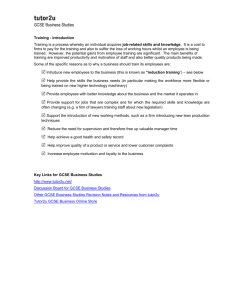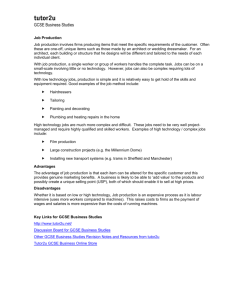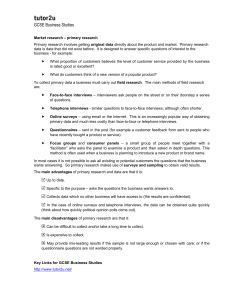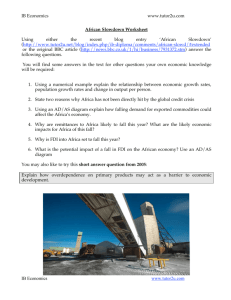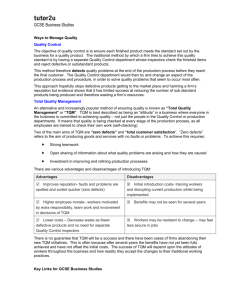tutor2u
advertisement
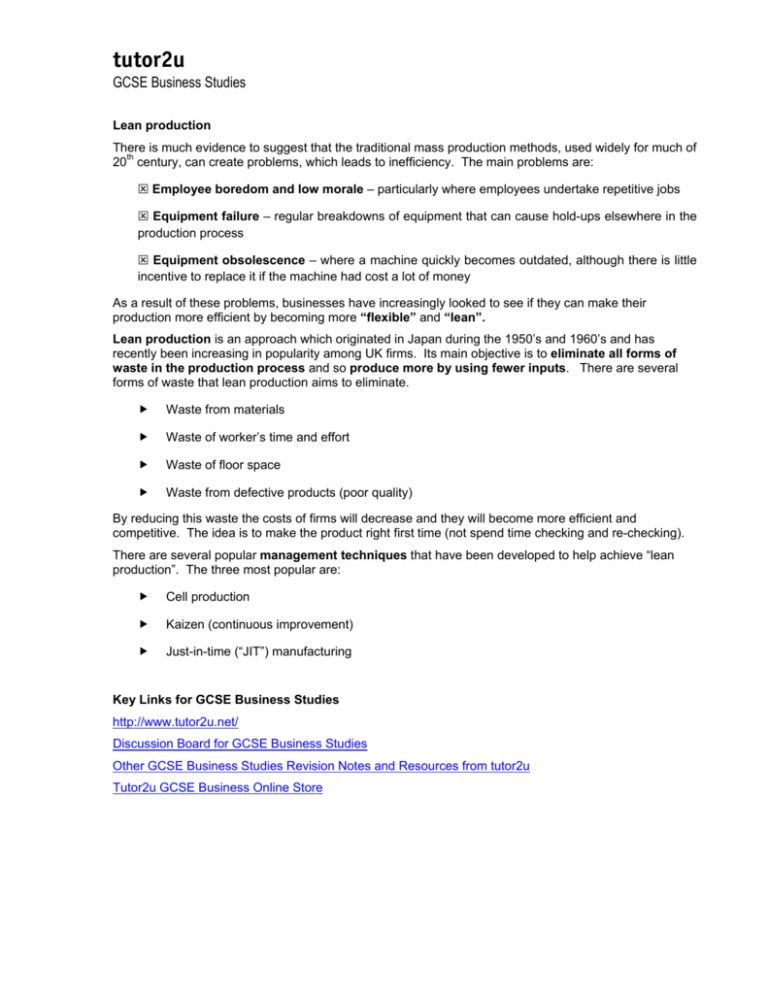
tutor2u GCSE Business Studies Lean production There is much evidence to suggest that the traditional mass production methods, used widely for much of 20th century, can create problems, which leads to inefficiency. The main problems are: 4 Employee boredom and low morale – particularly where employees undertake repetitive jobs 4 Equipment failure – regular breakdowns of equipment that can cause hold-ups elsewhere in the production process 4 Equipment obsolescence – where a machine quickly becomes outdated, although there is little incentive to replace it if the machine had cost a lot of money As a result of these problems, businesses have increasingly looked to see if they can make their production more efficient by becoming more “flexible” and “lean”. Lean production is an approach which originated in Japan during the 1950’s and 1960’s and has recently been increasing in popularity among UK firms. Its main objective is to eliminate all forms of waste in the production process and so produce more by using fewer inputs. There are several forms of waste that lean production aims to eliminate. f Waste from materials f Waste of worker’s time and effort f Waste of floor space f Waste from defective products (poor quality) By reducing this waste the costs of firms will decrease and they will become more efficient and competitive. The idea is to make the product right first time (not spend time checking and re-checking). There are several popular management techniques that have been developed to help achieve “lean production”. The three most popular are: f Cell production f Kaizen (continuous improvement) f Just-in-time (“JIT”) manufacturing Key Links for GCSE Business Studies http://www.tutor2u.net/ Discussion Board for GCSE Business Studies Other GCSE Business Studies Revision Notes and Resources from tutor2u Tutor2u GCSE Business Online Store
